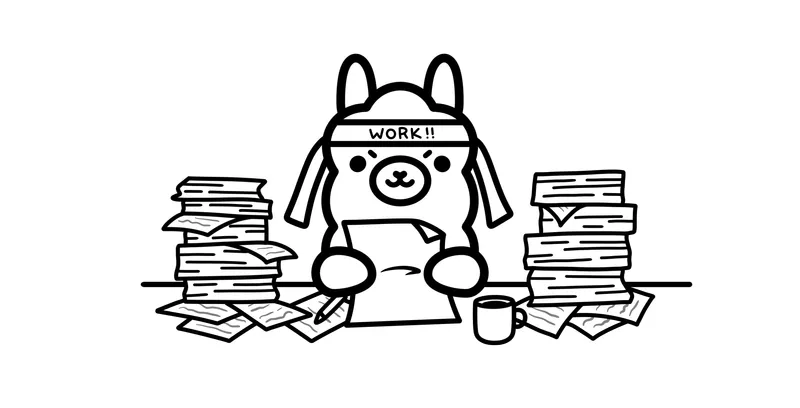Published on JAN 21 2025 by James Smith
What is Enshitification?

The Enshitification of the Internet: Causes, Consequences, and Pathways to Redemption
The concept of “enshitification” has emerged in popular discourse to describe the decline in the quality and utility of internet platforms over time, often as a result of corporate greed, monopolistic practices, and the prioritization of profit over user experience. This article examines the phenomenon through a scholarly lens, exploring its origins, mechanisms, and effects. Drawing on case studies from social media, e-commerce, and search engines, it critically analyzes the socio-economic and technological factors driving this trend. Finally, the article considers potential solutions, including regulatory interventions, decentralized technologies, and alternative business models.
Introduction Over the past two decades, the internet has transformed from a decentralized, user-centric medium to a heavily commodified and monopolized space. The term “enshitification,” popularized by digital theorist Cory Doctorow, succinctly captures the degradation of internet platforms that once prioritized user value but now primarily serve corporate interests. This shift has profound implications for democracy, privacy, and the global economy, warranting academic investigation into its root causes and potential remedies.
Web 1.0 vs 2+ Remember when you could open a website and read without having a video start playing? The user experience of an enshittified website is a frustrating, overwhelming assault on the senses, designed to prioritize monetization and SEO optimization at the expense of user satisfaction. Here’s a vivid breakdown of what it’s like to navigate such a site:
Navigating an enshittified website is like walking into a chaotic carnival when all you wanted was a quiet bookstore. The moment you arrive, you’re bombarded with pop-ups asking for your email, nudging you to enable notifications, or dangling a premium membership in your face. Before you can even say no, a banner slides down, and suddenly, the screen is cluttered with flashing ads that seem more interested in selling you miracle cures than letting you read.
And then there are the auto-playing videos—loud, intrusive, and pinned to the corner, refusing to go away no matter how much you scroll. They rarely add value, often talking about something vaguely related, as if someone hit “play all” on random clips.
When you finally get to the content, the real frustration begins. Instead of the answer you were searching for, you’re dragged through an endless, meandering story about the author’s childhood memories or some sentimental journey. The actual useful part—like the recipe or instructions—is buried miles down the page, almost as if they’re daring you to give up before finding it.
By the end, you’re not just frustrated—you’re exhausted. These sites aren’t designed to help; they’re designed to trap you in an endless cycle of distractions, all while wringing every last cent of ad revenue from your visit. It’s the internet equivalent of being sold five things you didn’t want before being handed the thing you came for, wrapped in duct tape.
Origins of Enshitification
Enshitification arises from the interplay of technological innovation, market dynamics, and regulatory failure. Platforms initially attract users through free or high-quality services, leveraging network effects to achieve dominance. Once entrenched, they gradually shift their focus to maximizing revenue, often at the expense of user experience. This process typically involves:
User Commodification: Platforms monetize user data through targeted advertising and other exploitative practices.
Pay-to-Play Models: Free access is restricted in favor of subscription fees or premium tiers.
Algorithmic Manipulation: Content delivery algorithms prioritize profit-generating activities, such as promoting ads or sensationalist content.
Case Studies
Social Media: Platforms like Facebook and Twitter exemplify enshitification. Initially designed to connect users, these platforms have become rife with invasive advertisements, misinformation, and content prioritization schemes that favor paid promotions over organic reach. The detrimental effects include reduced user trust, polarized discourse, and declining platform utility.
E-commerce: Amazon began as a user-friendly marketplace but has increasingly favored its private-label products and extracted higher fees from third-party sellers. These practices distort competition, reduce product diversity, and inflate prices for consumers.
Search Engines: Google’s search engine once prioritized relevant and unbiased results. Today, paid advertisements dominate the first page of search results, and search algorithms often prioritize content from large corporations over independent or niche sources.
Consequences
The enshitification of the internet has broad societal repercussions, including:
Erosion of Trust: Users increasingly view platforms as exploitative rather than empowering
Economic Inequality: Monopolistic practices stifle competition and innovation, consolidating wealth among a few dominant firms
Information Degradation: Algorithmic biases and pay-to-play systems distort information ecosystems, undermining access to quality content
Surveillance Capitalism: The pervasive collection and commodification of personal data raise profound ethical and privacy concerns
Pathways to Redemption
Addressing enshitification requires systemic change. Potential solutions include:
Regulatory Interventions: Policymakers must enforce antitrust laws, regulate data privacy, and ensure platform accountability. Decentralized Technologies: Blockchain and peer-to-peer networks offer alternatives to centralized platforms, empowering users and reducing monopolistic control. Alternative Business Models: Non-profit platforms, cooperatives, and public funding mechanisms could prioritize user welfare over shareholder profits. Digital Literacy: Educating users about platform practices and promoting ethical consumption can drive demand for fairer alternatives.
The enshitification of the internet is not an inevitable outcome but a consequence of specific economic and technological decisions. By understanding its mechanisms and impacts, society can reclaim the internet as a tool for collective empowerment. Through regulatory reform, technological innovation, and cultural shifts, it is possible to envision a digital ecosystem that prioritizes equity, transparency, and user well-being.
References
- Doctorow, C. (2023). “Enshitification: The Decline of Internet Platforms.” Blog post.
- Zuboff, S. (2019). The Age of Surveillance Capitalism. PublicAffairs.
- Tufekci, Z. (2017). Twitter and Tear Gas: The Power and Fragility of Networked Protest. Yale University Press.
- Wu, T. (2018). The Curse of Bigness: Antitrust in the New Gilded Age. Columbia Global Reports.
- Lanier, J. (2013). Who Owns the Future? Simon & Schuster.
Written by James Smith
← Home
















